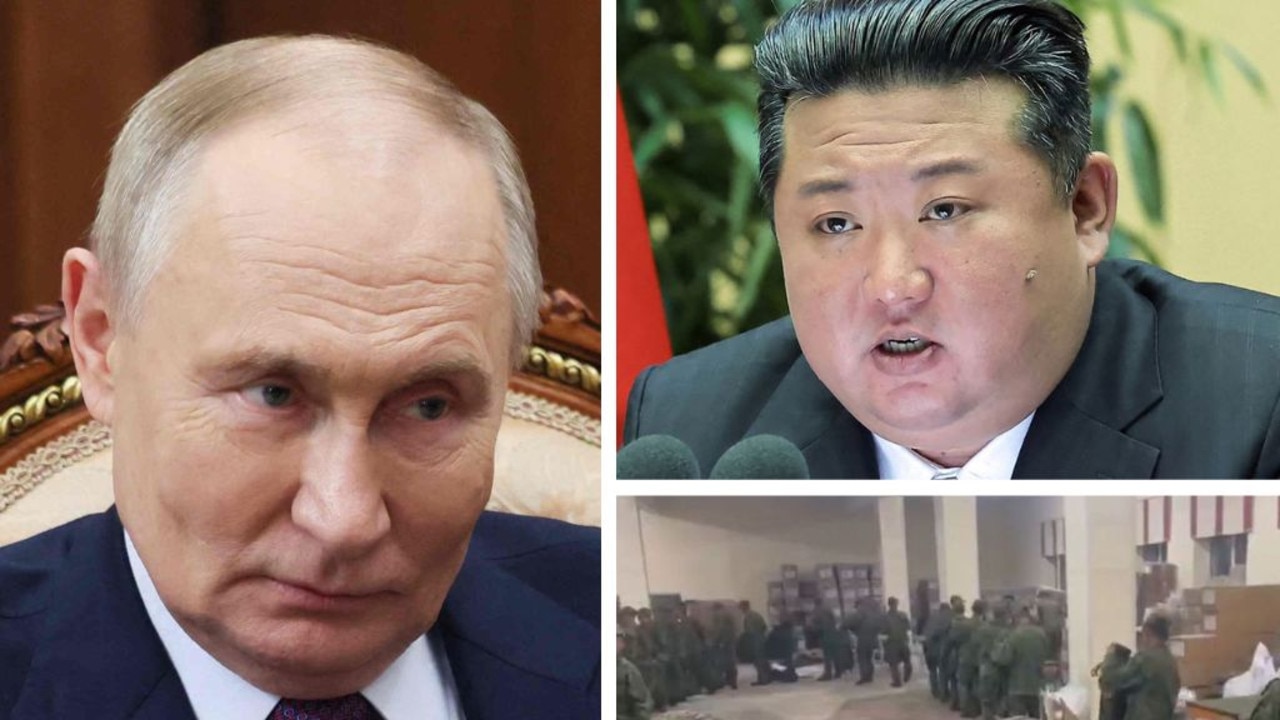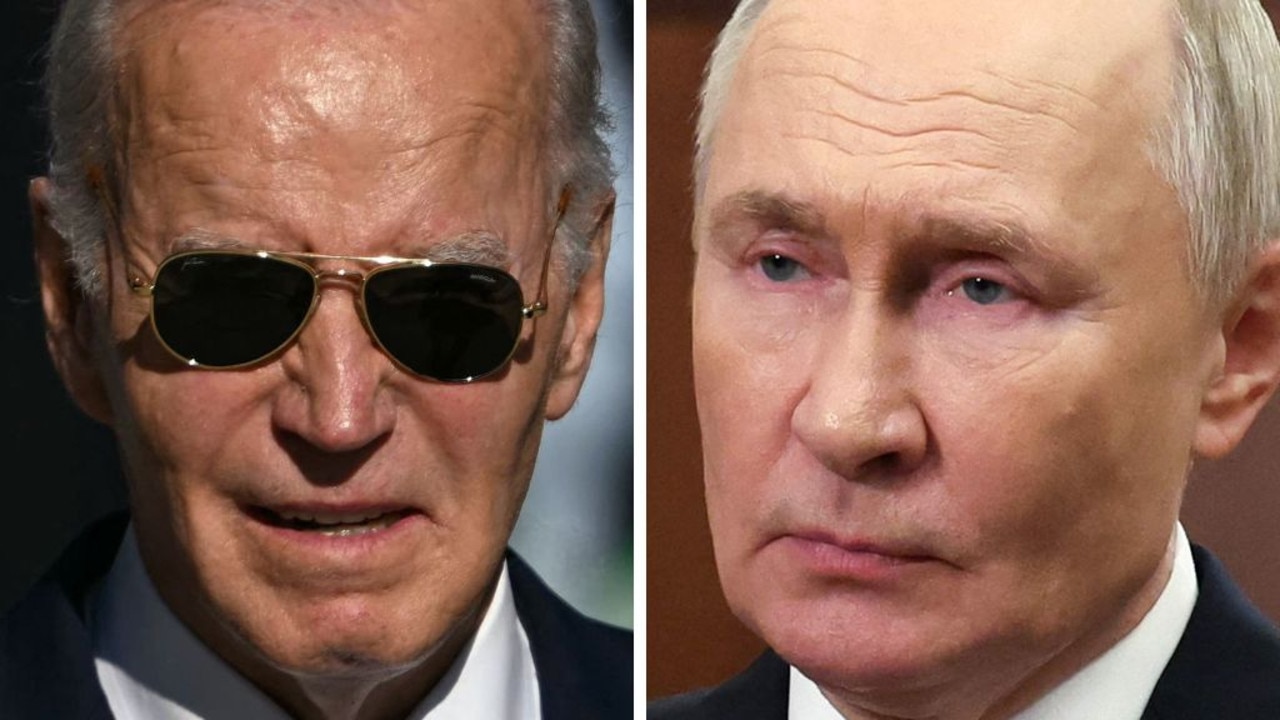Ukraine-Russia War: Vladimir Putin ‘reveals’ insane cause of Wagner plane explosion
Vladimir Putin released investigators’ bizarre finding into the plane explosion that killed Wagner mercenary rival Yevgeny Prigozhin.
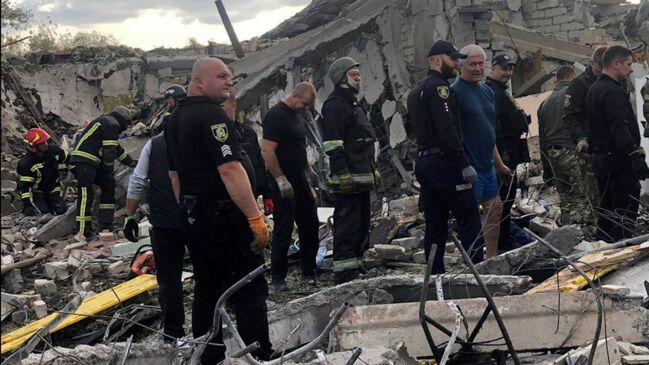
Wagner war lord Yevgeny Prigozhin was drunk or high on cocaine when a grenade being played with accidentally exploded and killed 10 people on-board their flight, according to the person accused of ordering his assassination.
Russian President Vladimir Putin made the wild claim during a meeting of the Valdai Discussion Club in Sochi, two months after the leader of a failed coup attempt died in a fiery crash.
“Fragments of hand grenades were found in the bodies of those killed in the crash,” Putin said. “There was no external impact on the plane.”
He also said 5kg of cocaine had been discovered at one of Prigozhin’s properties in St Petersburg during a raid by the FSB security service, and suggested the grenades may have detonated while being handled by Wagner mercenaries drinking or using drugs.

“Unfortunately, no examination was carried out for the presence of alcohol or drugs in the blood of the victims,” he said. “In my view, this should have been carried out, but it wasn’t.”
“Even though we know that after the famous events in the (Wagner) company in Saint Petersburg, the FSB (security service) found not only 10 billion in cash, but also five kilogrammes of cocaine,” Putin said.
Marat Gabidullin, a former Wagner commander who left the group in 2019, condemned Putin’s claims, telling the Times he didn’t believe the finding that the explosion could be accidental.
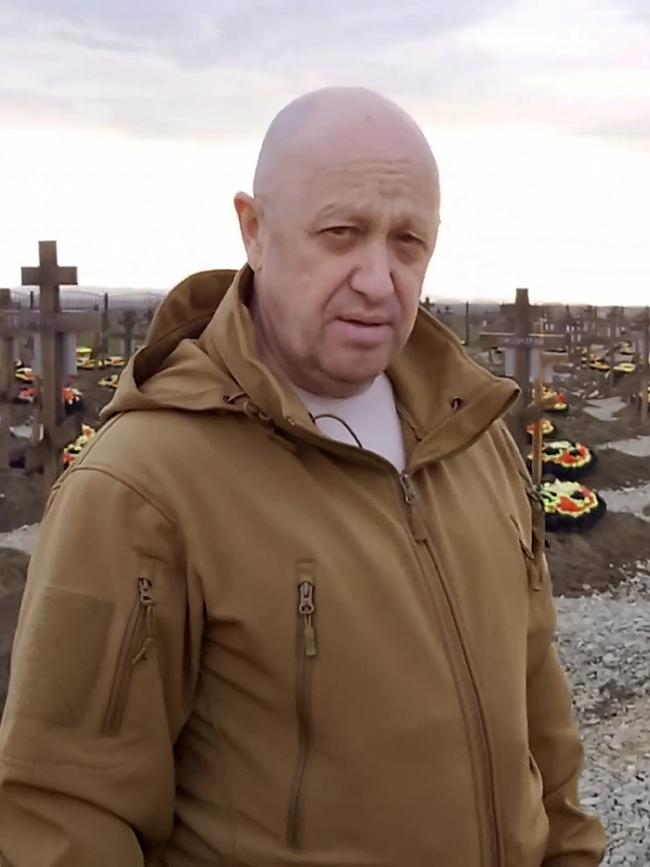
“I never noticed any signs that [Prigozhin] used drugs. And neither of them drank,” he said.
According to US intelligence sources, Putin did not immediately have Prigozhin killed after the march on Moscow but instead assassinated the mutiny leader after his Wagner mercenaries threatened NATO’s borders.
Fearing the US and its NATO allies would be drawn directly into the war in Ukraine by Wagner intrusions into Poland airspace, the US believes Putin had the group’s leader and top commanders shot out of the sky for the “unforgivable” breach.
“That was it,” said a US intelligence officer familiar with the matter.
Prigozhin was among 10 passengers and crew who died in a fiery plane crash north of Moscow, just days after he reappeared from his post-munity exile.
While Putin had banished remaining Wagner forces to Belarus in the aftermath of their rebellion, Pulitzer Prize-winning investigative journalist Seymour Hersh said that Prigozhin was sidelined in a historically Russian way for his “troublesome” threats to NATO countries.
VILLAGE WIPED OUT IN ‘HORRIFYING’ ATTACK
At least 51 people, including a six-year-old child, were killed in one of the deadliest Russian attacks on civilians since the beginning of the war in Ukraine.
The death toll wiped out 16 per cent of the small village’s population of just over 300 residents, who had gathered in the centre of Hroza, in Kharkiv, for a memorial service, according to officials in Kyiv.
It came as Russian President Vladimir Putin said he had been “tasked, essentially, with building a new world”, adding during a speech that war was about breaking Western hegemony and “not a territorial” conflict.
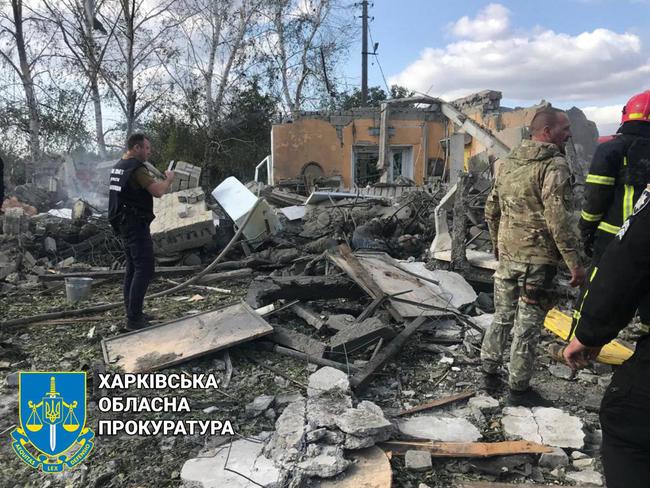
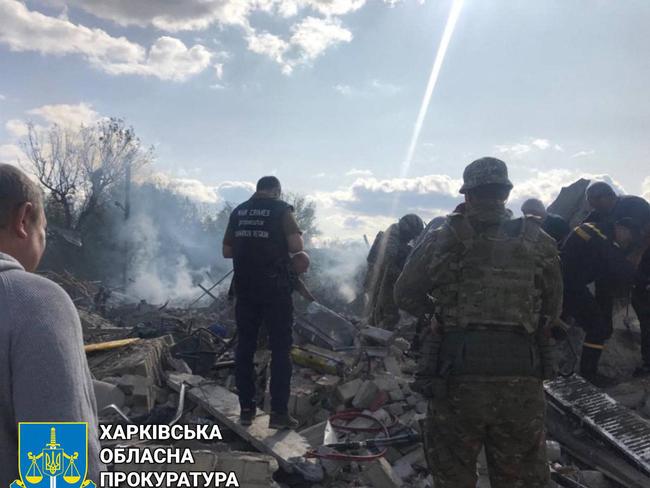
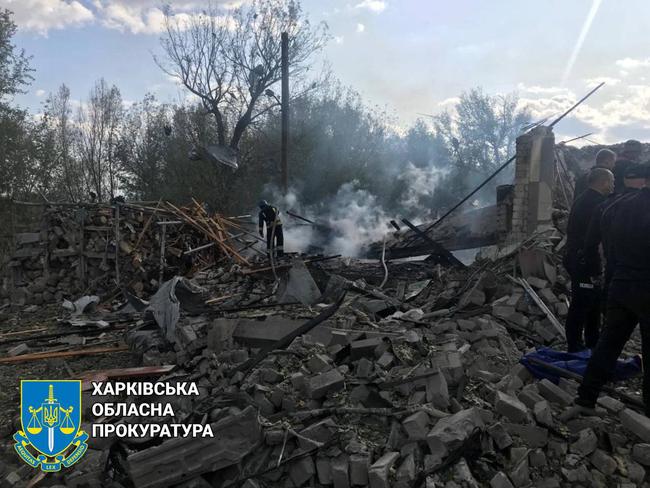
“The West always needs an enemy,” he said, continuing that Moscow “has no interests from the point of view of conquering some territories”.
Ukraine president Volodymyr Zelenskyy said a Russian attack on a grocery store and café, with an Iskander missile, was a “completely deliberate act of terrorism”.
Interior Minister Igor Klymenko said 60 residents in the village had gathered to remember a deceased member of the community, which was about 30 kilometres from the front line in Kharkiv.
Images showed emergency crews picking through piles of concrete and steel rubble as bodies were pulled from the mangled wreckage.
“Someone from each family was present in the café,” he said. “It’s terrible for the village, for the whole of Ukraine. This is another heinous war crime committed by the Russians for which they must be held responsible.”
“The search and rescue operation is ongoing,” Klymenko said. “There may still be people under the rubble”.
The death toll of 51, and rising, places the attack behind the 60 killed in a cluster munition strike on a train station in Kramatorsk in April last year as one of the deadliest for non-combatants during the start of the war.
The UN’s humanitarian envoy for Ukraine Denies Brown said they were “appalled” by the dozens killed.
“The images arriving from the locality, home to just above 300 people, are absolutely horrifying,” Brown.

The head of the Kharkiv region Oleg Sinegubov said the strike took place around 1:15pm, local time, in the frontline town, while Mykhailo Podolyak, an adviser to Zelenskyy, said the attack had “no military logic”.
The village is west of Kupiansk, a frontline town in the region where officials have recently ordered mandatory evacuations after an uptick in Russian strikes.
Zelensky’s adviser Mykhailo Podolyak said the attack had “no military logic”. “This is a reminder to anyone who is willing to smile and shake hands with war criminal Putin at international conferences,” he said. “Putin’s Russia is a true evil”.
Defence Minister Rustem Umerov said the strike showed Ukraine needed more air defence “to protect our country from terror. We are discussing this with partners”.
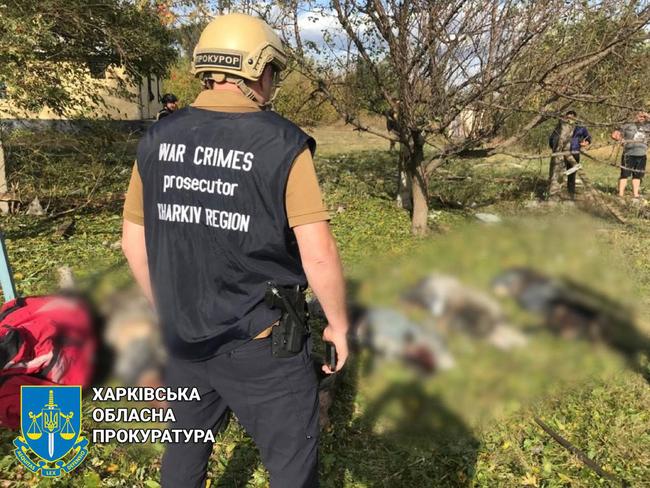
Large swathes of the Kharkiv region were captured by Russian forces in the early days of their invasion launched in February last year.
Ukrainian forces recaptured much of the border territory during a lightning offensive late last year, but the regional capital, also called Kharkiv, is still subjected to routine shelling.
RUSSIA’S ‘SUICIDE SQUAD’ UNLEASHED ON UKRAINE
A rabble-rousing band of drunks, convicts, and insubordinate misfits are being used as human meat shields on the Ukraine frontline as Vladimir Putin resurrects Joseph Stalin’s World War II-era “punishment battalions”.
The real-life “Suicide Squad” of military and civilian fighters in Russia’s “Storm-Z”, who have fallen on the wrong side of martial law, are given an effective death sentence in Ukraine for miscellaneous discipline transgressions.
The penal units of between 100 and 150 fighters have been ordered to lead the most dangerous manoeuvres in the war’s deadliest frontline battles in places like Bakhmut and Zaporizhzhia, where few, if any, are expected to survive.
“They gave their lives for the motherland and have fully absolved themselves of their guilt,” Putin said when questioned about convicts in the ranks.
It follows Russia’s WWII practice of punishing troops who disobeyed orders, retreated, or went AWOL, to expendable battalions as the Red Army retreated from Nazi Germany in 1942.
While the existence of “Storm-Z” squads has been hinted at by Russian state-controlled media, Reuters has chronicled their formation and operation with 13 sources familiar with the units, including five fighters.
“Storm fighters, they’re just meat,” said a regular soldier from army unit no. 40318, who was deployed near the fiercely contested city of Bakhmut, told Reuters.
“If the commandants catch anyone with the smell of alcohol on their breath, then they immediately send them to the Storm squads.”
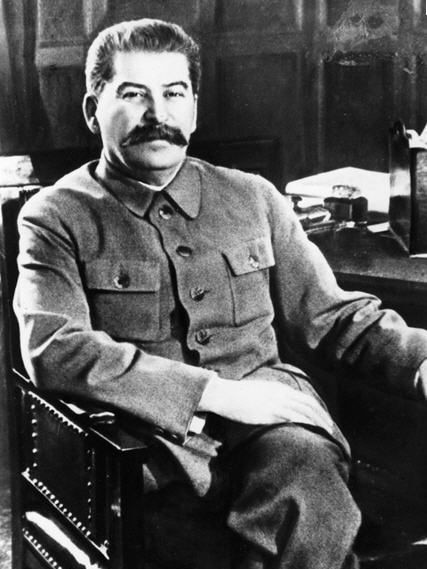
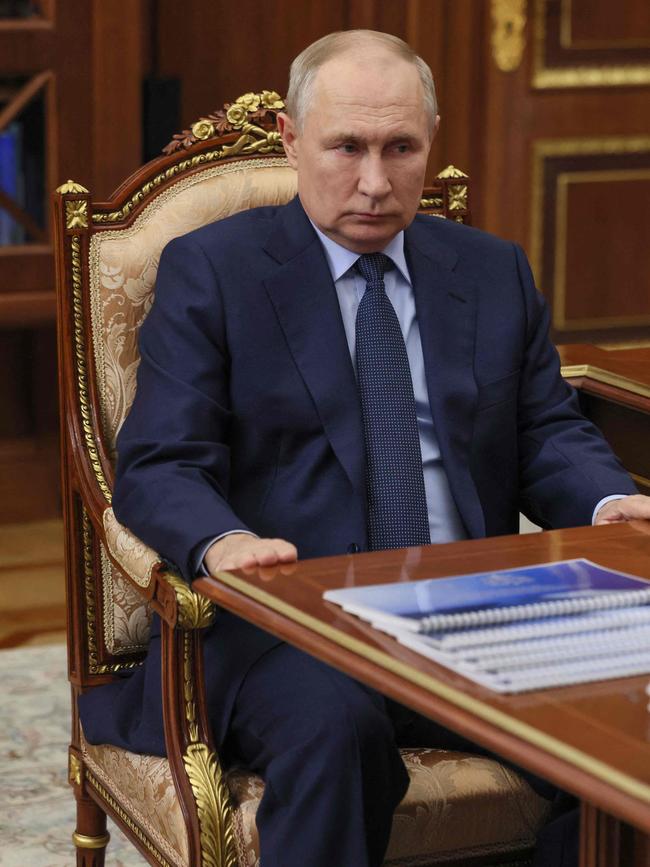
Convicts seeking a pardon make up the bulk of the Russian military’s Storm-Z squad, which operates under the official chain of command unlike the mercenary fighters of the disbanded Wagner Group.
But any other troop from the regular army seen as an insubordinate troublemaker can be transferred to the penal unit, ostensibly when convicted under Russian military legislation.
Several Storm-Z fighters, however, said they did not know about court hearings taking place before fighters were transferred to the units, placing soldiers who disobey orders alongside convicted thieves, rapists and murderers.
At least five of the 100-150 man units have been ordered to repel Ukraine’s push in the south and east of the country, with Russian investigative outlet The Conflict Intelligence Team saying the squads are useful because they can be deployed as expendable infantry “in the most dangerous parts of the front”.
During intense fighting near Bakhmut in June, one Storm-Z fighter said all but 15 of his unit’s 120 men, embedded with the 237th regiment, were killed or wounded. In a video from Zaporizhzhia posted online the same month, a group of 20 said they refused to return to the frontline.
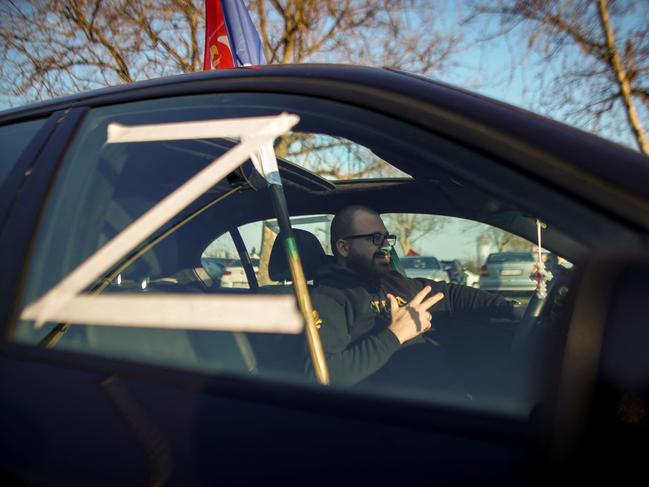
“On the front line, where we’ve been, we did not get deliveries of ammunition,” they said.
“We did not get water or food. The injured were not taken away: still now the dead are rotting.”
Two of the fighters in the video were beaten by military police, according to a family member in Siberia contacted by Reuters.
“My God, let this end soon,” she said.
While the Russian Defense Ministry hasn’t publicly confirmed the existence of Storm-Z units, the Institute for the Study of War think-tank in April circulated a Russian military report about the squads being “created outside of conventional army unit structure”.
More Coverage
Originally published as Ukraine-Russia War: Vladimir Putin ‘reveals’ insane cause of Wagner plane explosion




